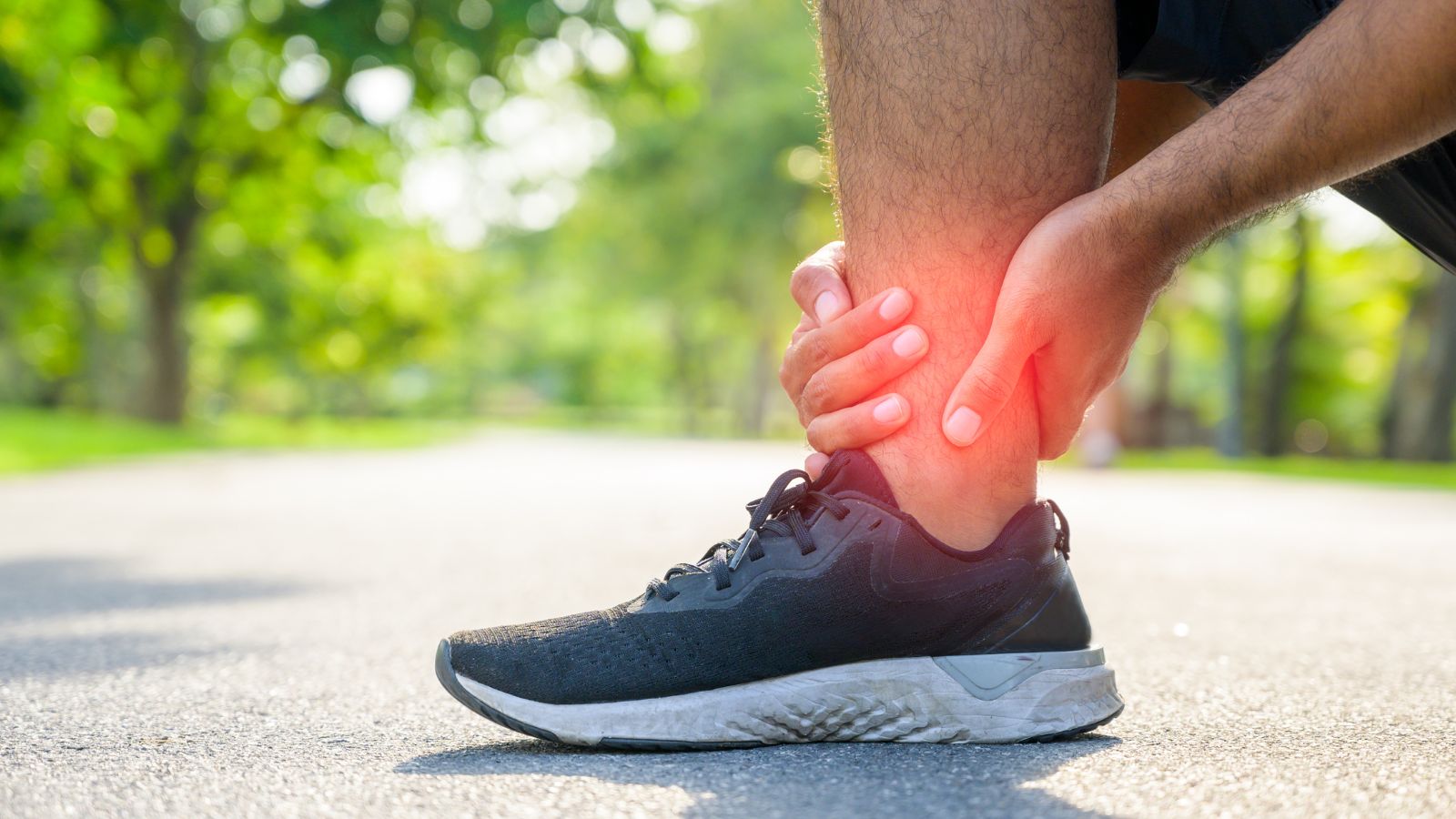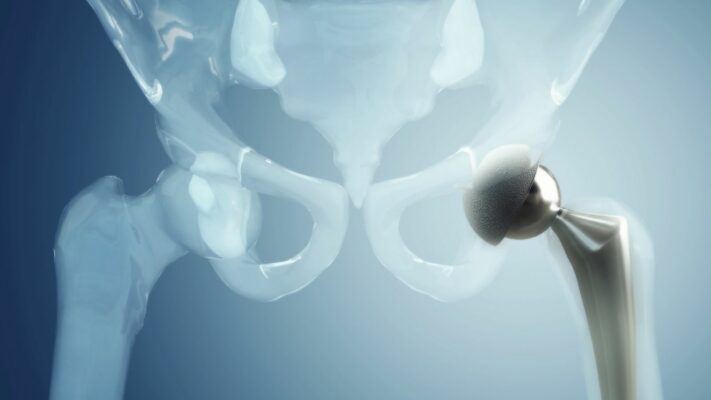Prof. Dr. Murat Demirel, one of the leading orthopedic doctors in Ankara specializing in ankle ligament injury treatment, stands out with his extensive experience in diagnosing and treating ligament strains, partial tears, or complete ruptures. Ankle ligament injuries often occur during sports activities, falls, sprains, or sudden changes in direction. If not properly treated, they may lead to permanent looseness in the joint, recurrent injuries, and risk of arthritis. Prof. Dr. Demirel provides personalized treatment plans for his patients in Ankara at hospitals equipped with advanced medical technology and high hygiene standards.
Depending on the severity of the injury, treatment options include rest, splint or cast applications, physical therapy programs, and modern methods such as PRP or stem cell injections. When necessary, surgical ligament repair or reconstruction can also be performed. Following ankle ligament injury treatment, adherence to medical advice ensures a faster, safer, and long-lasting recovery. In addition, up-to-date and transparent information on ankle ligament injury treatment costs in Ankara is provided to help patients make informed decisions. You can also protect your ankle health, improve mobility, and prevent recurrent injuries by contacting us to schedule an appointment.
| Disease Name | Ankle Ligament Injury |
| Affected Area | Ligaments around the ankle (especially lateral ligaments: ATFL, CFL, PTFL; less commonly medial and syndesmotic ligaments) |
| Main Causes | Sudden changes in direction, sprains, falls, trauma during sports activities |
| Symptoms | Pain, swelling, bruising, feeling of instability, inability to bear weight on the ankle |
| Risk Factors | Previous sprains, weak muscles, proprioceptive disorders, inappropriate footwear |
| Diagnostic Methods | Physical examination (drawer, inversion tests), X-ray (to rule out fractures), MRI or ultrasound (to evaluate ligament tears) |
| Injury Grades | Grade I: Ligament strain; Grade II: Partial tear; Grade III: Complete tear and instability |
| Treatment Methods | RICE protocol, elastic bandage, orthosis, NSAIDs, functional rehabilitation; surgical repair in advanced cases |
| Need for Surgery | Recommended in complete tears, recurrent instability, or cases unresponsive to conservative treatment |
| Need for Physical Therapy | Essential for functional rehabilitation, muscle strengthening, and proprioceptive training |
| Possible Complications | Chronic instability, recurrent sprains, cartilage damage, synovitis |
| Recovery Process | Grade I: 1–2 weeks, Grade II: 3–6 weeks, Grade III: 6–12 weeks; recovery after surgery may take longer |
| Need for Follow-Up | Clinical evaluations and monitoring of the rehabilitation process are recommended |


Prof. Dr. Murat Demirel
Orthopedics and Traumatology Specialist
Orthopedics Specialist Prof. Dr. Murat Demirel was born in Ankara in 1974. He completed his primary education at Ankara Kavaklıdere Primary School and his secondary and high school education at Ankara Atatürk Anatolian High School. Dr. Demirel graduated from Ankara University Faculty of Medicine in 1998 and completed his residency in Orthopedics and Traumatology at Ankara Numune Training and Research Hospital, 1st Orthopedics and Traumatology Clinic, in 2004.
PhD
Ankara University Institute of Health Sciences
Specialization
Ankara Numune Training and Research Hospital, 1st Orthopedics Clinic
Medical School
Ankara University Faculty of Medicine
Yazı İçeriği
What Is an Ankle Ligament Injury and How Is the Anatomical Structure of the Ankle Related to This Condition?
In its simplest form, an ankle ligament injury can be defined as the overstretching or tearing of the fibrous tissues, known as ligaments, that hold together the bones forming the ankle joint and act like strong ropes. This usually happens when the ankle suddenly and uncontrollably twists, commonly referred to as a “sprain.”
These ligaments, which ensure the ankle joint moves in a stable and balanced manner, are grouped into three main complexes that function like a team. Understanding their roles helps us better grasp the nature of the injury.
The main ligament groups providing ankle stability are:
Lateral Ligament Complex: This group is the “trio” most frequently injured in ankle sprains. They are damaged mostly when the foot rolls inward.
Medial (Deltoid) Ligament Complex: Located on the inner side of the ankle, this strong, fan-shaped ligament provides significant stability.
Syndesmotic Ligaments (High Ligaments): These critical structures connect the lower ends of the tibia and fibula, forming the roof of the joint.
The lateral ligaments are the most frequently injured members of this “team.” The weakest of these, the ATFL (Anterior Talofibular Ligament), usually takes the first blow and is most prone to tears. Its main function is to prevent the talus bone from sliding forward. As the sprain severity increases, the CFL (Calcaneofibular Ligament), which controls excessive outward tilting of the ankle, may also be injured. The strongest and least frequently injured ligament, the PTFL (Posterior Talofibular Ligament), is usually affected only in severe cases such as ankle dislocations.
The deltoid ligament on the inner side is much stronger and thicker compared to the lateral ligaments, making injuries less common. They usually occur in severe outward twisting of the ankle or along with fractures.
Syndesmotic ligament injuries are known as “high ankle sprains.” These are considered more serious than other sprains because they weaken the fundamental connection between the two leg bones. This significantly disrupts joint mechanics and leads to a longer and more challenging recovery.
Which Movements and Conditions Increase the Risk of Ankle Ligament Injuries?
Ankle ligament injuries often result from sudden and uncontrolled movements. This small joint, which bears our entire body weight, can be quite vulnerable under certain conditions. Knowing how injuries occur is the first step in preventing them.
The most common mechanisms of injury include:
Inversion (Foot Turning Inward): This accounts for the vast majority of ankle ligament injuries. It occurs when the sole of the foot suddenly turns inward while the ankle tilts outward during walking, running, or landing after a jump. This overstretches the lateral ligament complex (especially the ATFL) beyond its capacity, leading to tears.
Eversion (Foot Turning Outward): Less common, this occurs when the foot is forcefully twisted outward, potentially damaging the strong deltoid ligament on the inside of the ankle.
External Rotation (Twisting): This happens when the foot remains fixed on the ground while the body rotates strongly over it. This particularly stresses the syndesmotic ligaments and can cause a serious condition known as a “high ankle sprain.”
Several factors and conditions may increase susceptibility to such injuries. Knowing these risk factors can help you take precautions.
Key risk factors for ankle ligament injuries include:
- History of previous ankle sprains
- Sports involving sudden direction changes such as basketball, volleyball, and football
- Weak proprioception (sense of balance and coordination)
- Weakness or loss of flexibility in the leg and hip muscles
- Certain foot structures such as high arches or flat feet
- Inappropriate footwear with insufficient support
- Performing activities on uneven, slippery, or rough surfaces
- Certain genetic conditions causing generalized ligament laxity
The most important point is that a previous sprain is the greatest risk factor. Each injury leads to some permanent looseness in the ligaments and, more importantly, a reduced ability of the brain to perceive joint position. This creates a vicious cycle that predisposes patients to recurrent sprains. The only way to break this cycle is through proper and complete rehabilitation.
How Are Ankle Ligament Injuries Classified and What Types Exist?
After experiencing an ankle ligament injury, your doctor evaluates both the severity and location of the damage. This classification is critical to determine the treatment pathway and provide realistic expectations about recovery. Injuries are graded based on the extent of the damage.
The grading of ligament injuries is as follows:
Grade 1 (Mild): No rupture, only overstretching and microscopic tears in the fibers.
Grade 2 (Moderate): Partial tear with some loss of continuity but still partly intact.
Grade 3 (Severe): Complete rupture with no connection between the torn ends.
Grade 1 injuries usually present with mild pain and minimal swelling. Patients can often bear weight and continue daily activities with slight limitations. There is no joint instability.
Grade 2 injuries are more serious, with more pronounced pain, swelling, and bruising. Walking becomes difficult due to pain, and mild instability can be detected during examination.
Grade 3 injuries indicate a complete ligament rupture. Symptoms are severe, with intense pain, rapid swelling and bruising, and inability to bear weight. The hallmark is a distinct feeling of instability or the ankle “giving way.” These signs closely resemble those of a fracture, requiring urgent medical evaluation.
In addition to grading, ankle ligament injuries are also classified by anatomical location. This classification often provides more insight into severity and recovery than grading alone:
Lateral (Outer) Ligament Sprain: The most common type.
Medial (Inner) Ligament Sprain: Less common.
High Ankle Sprain (Syndesmosis): Among the most serious, requiring longer recovery.
For example, a Grade 3 lateral ligament injury (complete rupture) can often heal excellently without surgery through proper conservative treatment. However, a Grade 1 or 2 high ankle sprain disrupts fundamental joint stability and requires careful monitoring and prolonged rehabilitation. Therefore, accurate diagnosis of both the grade and location by a specialist is crucial for selecting the appropriate treatment plan.
Contact us for detailed information and an appointment!
What Symptoms Occur When an Ankle Ligament Injury Happens?
When an ankle ligament injury occurs, your body sends a series of signals to indicate that something is wrong. The severity of these symptoms can vary greatly depending on the degree of the injury, but there are common signs and findings most patients experience.
The most common symptoms of an ankle ligament injury include:
- Sharp or throbbing pain at the injury site
- Rapid swelling around the ankle
- Bruising or discoloration under the skin
- Extreme tenderness when touching the injured ligaments
- Difficulty or restriction in moving the ankle
- Inability to bear weight or severe pain while walking
- A feeling of instability, looseness, or the ankle “giving way”
Pain is usually the first and most prominent symptom, felt both at rest and especially during movement or weight-bearing. Swelling occurs due to internal bleeding and edema in the injured tissues, typically becoming more pronounced within the first few hours. Bruising often appears a day or two later and may spread to the heel and toes due to gravity, which, while alarming, is expected.
One of the most important symptoms is the sensation of “instability” or insecurity. This is especially typical in Grade 3 injuries (complete ligament rupture). Patients often describe it as “my ankle gives out” or “it doesn’t feel stable,” indicating that the ligaments can no longer support the joint.
Some patients report hearing a “pop” or feeling a snap at the time of injury, which usually suggests a complete tear, although this is not always present.
If, in addition to these symptoms, you notice widespread numbness, tingling, pins-and-needles sensation, or extreme paleness and coldness in your toes or foot, this may indicate damage to nerves or blood vessels. These are considered “red flag” symptoms requiring immediate emergency evaluation.
Which Methods Are Used to Diagnose an Ankle Ligament Injury?
When consulting an Orthopedics and Traumatology specialist with suspected ankle ligament injury, a systematic evaluation process is followed to establish an accurate diagnosis. This process aims not only to identify the injury but also to determine its severity and the most appropriate treatment plan. Diagnosis usually involves three main steps.
Listening Carefully (Patient History):
First and foremost, your account of the incident provides the most valuable information. How did your foot twist? What were you doing? Did you hear a sound at the moment of injury? Were you able to put weight on your foot immediately afterward? Have you experienced a similar issue before? The answers to these questions offer important clues regarding which ligaments may be injured and guide the physical examination.
Detailed Physical Examination:
This is the cornerstone of diagnosis. During the exam, the injured ankle is compared with the healthy one.
Inspection: The location and severity of swelling and bruising, and the presence of any visible deformities, are assessed.
Palpation: Gentle pressure is applied to specific anatomical points around the ankle (lateral ligaments, medial ligaments, bony prominences) to pinpoint the exact location of pain, helping identify the site of injury (lateral, medial, or syndesmotic).
Movement and Stability Tests: Special maneuvers are performed to assess whether the ligaments can still function properly. By moving the ankle in controlled ways, any looseness or abnormal motion can be detected. Tests such as the “Anterior Drawer Test” and “Talar Tilt Test” assess the integrity of specific ligaments. If a high ankle sprain is suspected, a “Squeeze Test” may be performed. Since these can be painful in the acute stage, they are done with great care and gentleness.
Imaging Methods:
To confirm physical findings and rule out other issues, imaging methods may be required. The choice depends on the clinical suspicion.
Common imaging methods include:
X-ray: The most common initial imaging technique, used primarily to rule out fractures. If there is bone tenderness at specific points or inability to bear weight immediately after the injury, an X-ray is essential to exclude a fracture.
Magnetic Resonance Imaging (MRI): The most valuable method for showing the condition of ligaments, tendons, and cartilage in detail. MRI can precisely reveal the location and extent of a tear (partial or complete) as well as associated cartilage damage or bone edema. However, it is not routinely used for every sprain—rather in cases of persistent symptoms, surgical planning, or unclear diagnoses.
Ultrasound (USG): When performed by an experienced physician, USG allows dynamic assessment of the ligaments (while the ankle is moving), offering a practical and safe diagnostic option.
Together, these three steps provide a complete and accurate picture of the injury, forming the foundation for creating the most effective personalized treatment plan.
What Are the Non-Surgical Treatment Options for Ankle Ligament Injuries and How Should Initial Care Be Managed?
As I often tell my patients, the good news is that the vast majority of ankle ligament injuries, including even severe complete tears, can heal successfully with a proper and patient non-surgical treatment program. The success of treatment depends on the correct steps taken immediately after the injury and the commitment shown during recovery.
Immediate Care and the First 72 Hours:
The primary goal in this critical early phase is to limit the damage, reduce pain, and control swelling. For this, the internationally recognized and modernized “PEACE & LOVE” protocol serves as the best guide. The “PEACE” part covers the measures required during the first days.
PEACE principles for the first few days:
P (Protection): Avoid activities that worsen pain and allow your ankle to rest. Limiting weight-bearing during the first 1–3 days prevents further damage.
E (Elevation): Keep your injured ankle elevated above heart level as often as possible using pillows. This simple action significantly reduces swelling and bruising with the help of gravity.
A (Avoid Anti-inflammatories): Recent approaches suggest avoiding routine use of anti-inflammatory medications (such as ibuprofen) in the first 48–72 hours, as they may interfere with the natural healing process. If pain is severe, pain relievers like paracetamol may be considered—always consult your doctor.
C (Compression): Applying gentle pressure with an elastic bandage or special ankle brace helps limit swelling.
E (Education): Understanding your condition and trusting your body’s healing ability is important. Active recovery strategies lead to better outcomes than purely passive treatments.
Non-Surgical Treatment After the Acute Stage:
Once the first few days have passed, treatment gradually shifts toward regaining function. At this stage, the “LOVE” principles come into play.
LOVE principles for continued recovery:
L (Load): Gradually begin bearing weight on your ankle as pain allows. Prolonged immobilization weakens muscles and stiffens the joint. Your doctor or physiotherapist will guide when and how much weight to apply.
O (Optimism): A positive mindset strengthens healing signals between the brain and body.
V (Vascularisation): Early engagement in pain-free cardiovascular exercises (such as cycling without stressing the injured foot) improves circulation and delivers oxygen and nutrients to the healing tissues.
E (Exercise): Active exercises to restore range of motion, strength, and balance are the cornerstone of rehabilitation.
Depending on injury severity, your doctor may recommend supportive devices such as lace-up ankle braces, air-cast splints, or short walking boots. These devices protect the healing ligaments while still allowing controlled movement.
Contact us for detailed information and an appointment!
Frequently Asked Questions
What is an ankle ligament injury and how does it occur?
An ankle ligament injury is the overstretching, partial tearing, or complete rupture of the ligaments in the ankle. It usually occurs due to sudden sprains, missteps, falls, or sudden strain on the ankle during sports activities.
What are the symptoms of a ligament injury?
In ligament injuries, sudden pain, swelling, bruising, tenderness, and restricted movement occur in the ankle. Difficulty bearing weight and a feeling of instability are common. In severe cases, a popping sound may be heard, or deformity may be observed.
How is an ankle ligament injury diagnosed?
Diagnosis involves listening to the patient’s complaints and trauma history, followed by a physical examination. If necessary, an X-ray is taken to rule out fractures. Ultrasound or MRI may be used to determine the degree of ligament damage.
What are the treatment methods for ligament injuries?
Initial treatment usually includes rest, applying ice, compression with an elastic bandage, and elevating the ankle. Pain relievers and anti-swelling medications may be prescribed. Severe tears may require a cast, splint, or sometimes surgical treatment.
Why are physical therapy and rehabilitation important?
After ligament healing, physical therapy and rehabilitation are essential to restore range of motion, muscle strength, and joint stability. Regular exercises reduce the risk of recurrent sprains.
How long does it take for an ankle ligament injury to heal?
The recovery period varies depending on the severity of the injury: 1–2 weeks for mild sprains, 3–6 weeks for moderate tears, and longer for complete ligament ruptures.
When is surgery necessary in ligament injuries?
Most ligament injuries are treated without surgery. However, surgical intervention may be required in cases of complete ligament rupture, recurrent severe sprains, or chronic joint instability.
Is there a risk of re-spraining after a ligament injury?
Yes, without sufficient healing and rehabilitation, or if the muscles are not strengthened, the ankle becomes more prone to recurrent sprains. Preventive exercises and proper footwear are important.
When can patients return to sports and daily activities?
Return to sports and daily activities is possible once pain, swelling, and movement restrictions have fully resolved, and muscle strength and balance are restored. This usually takes 3–6 weeks but may be longer in severe cases.
How can ankle ligament injuries be prevented?
Performing regular balance and strengthening exercises, choosing proper footwear, warming up before sports, avoiding risky surfaces, and refraining from sudden movements help prevent ligament injuries.




